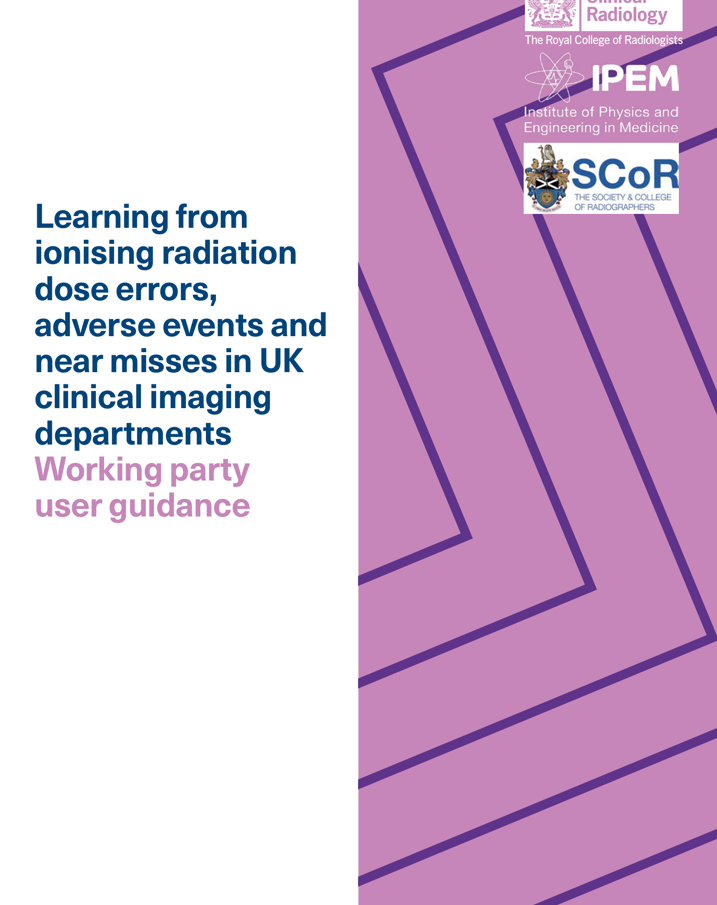Learning from ionising radiation dose errors, adverse events and near misses in UK clinical imaging departments
Date: 2019
The primary aim of this user guidance is to help UK clinical imaging staff to minimise future potential ionising radiation exposures errors/near misses while enhancing ongoing patient safety.
This user guidance is intended to provide a practical approach to implementing the standard categorisation system for the identification of errors and near misses – this includes the primary process coding (Tiers 1 and 2 of the coding taxonomy) and any contributory factors with instructions on using the reporting template (an information technology [IT] system to report final codes). It involves a clear objective methodology for highlighting, categorising and recording errors and near misses involving ionising radiation that may occur during any phase of the clinical imaging patient pathway. The guidance is covered by pages 4–14 but also includes supporting information within appendices.
In addition to this user guidance, a full and comprehensive report from the working party to the UK clinical imaging board is available. This report includes a review of the global literature surrounding this issue, the approach to implementing the standard categorisation system, recommendations for implementation as well as the agreed taxonomies and reporting methodologies, which mirror the various patient pathways in clinical imaging services. The report also details information about the development of the taxonomy over time, the pilot phase of the work (involving a sample of clinical imaging departments across the UK), the results of the pilot (including consistency checking and resultant codes of control scenarios) as well as the final changes made to the coding taxonomy (including contributory factors) and the reporting template. Resultant codes for further scenarios are included in the report to support a deeper understanding of the standard categorisation system.
